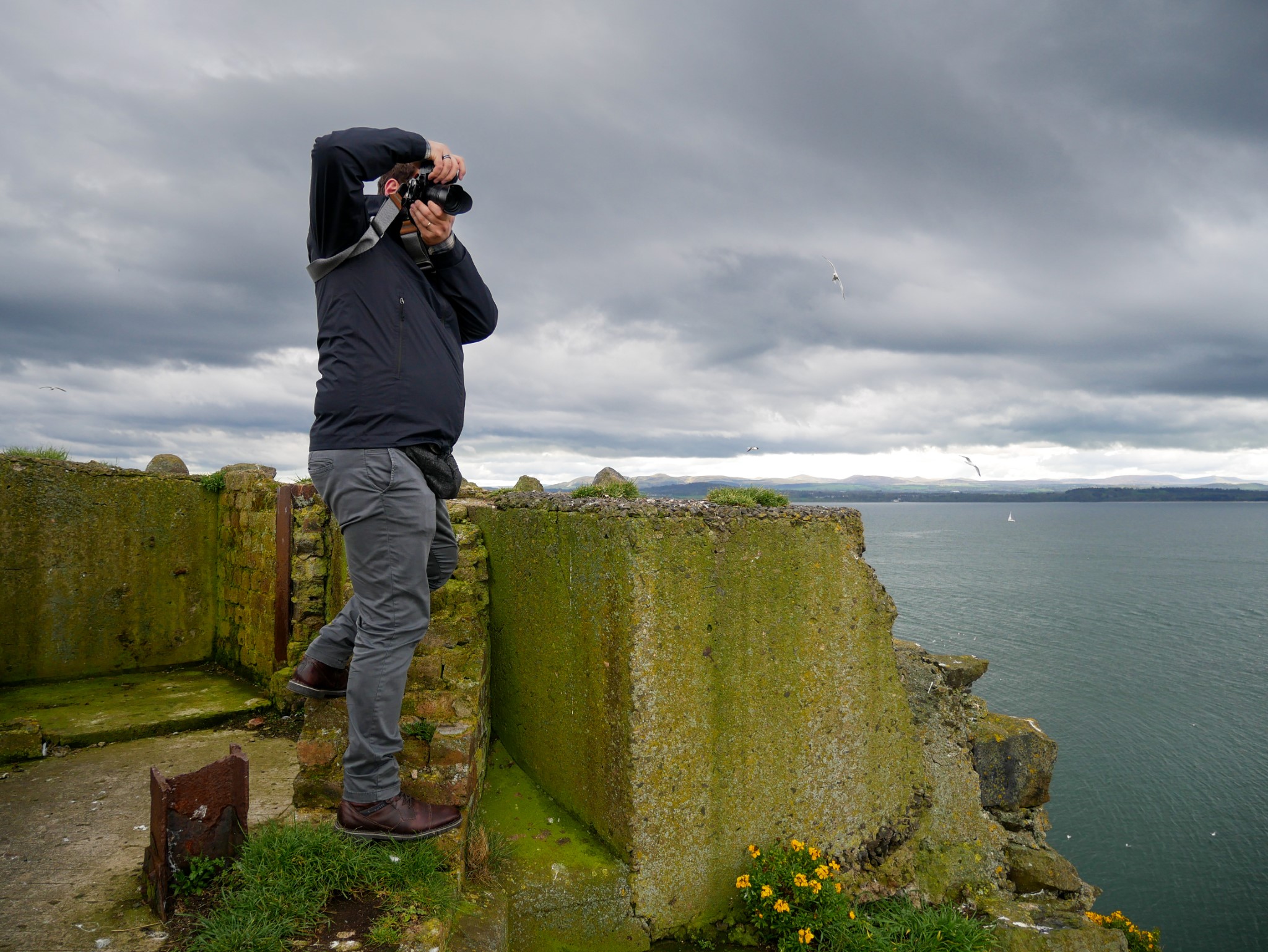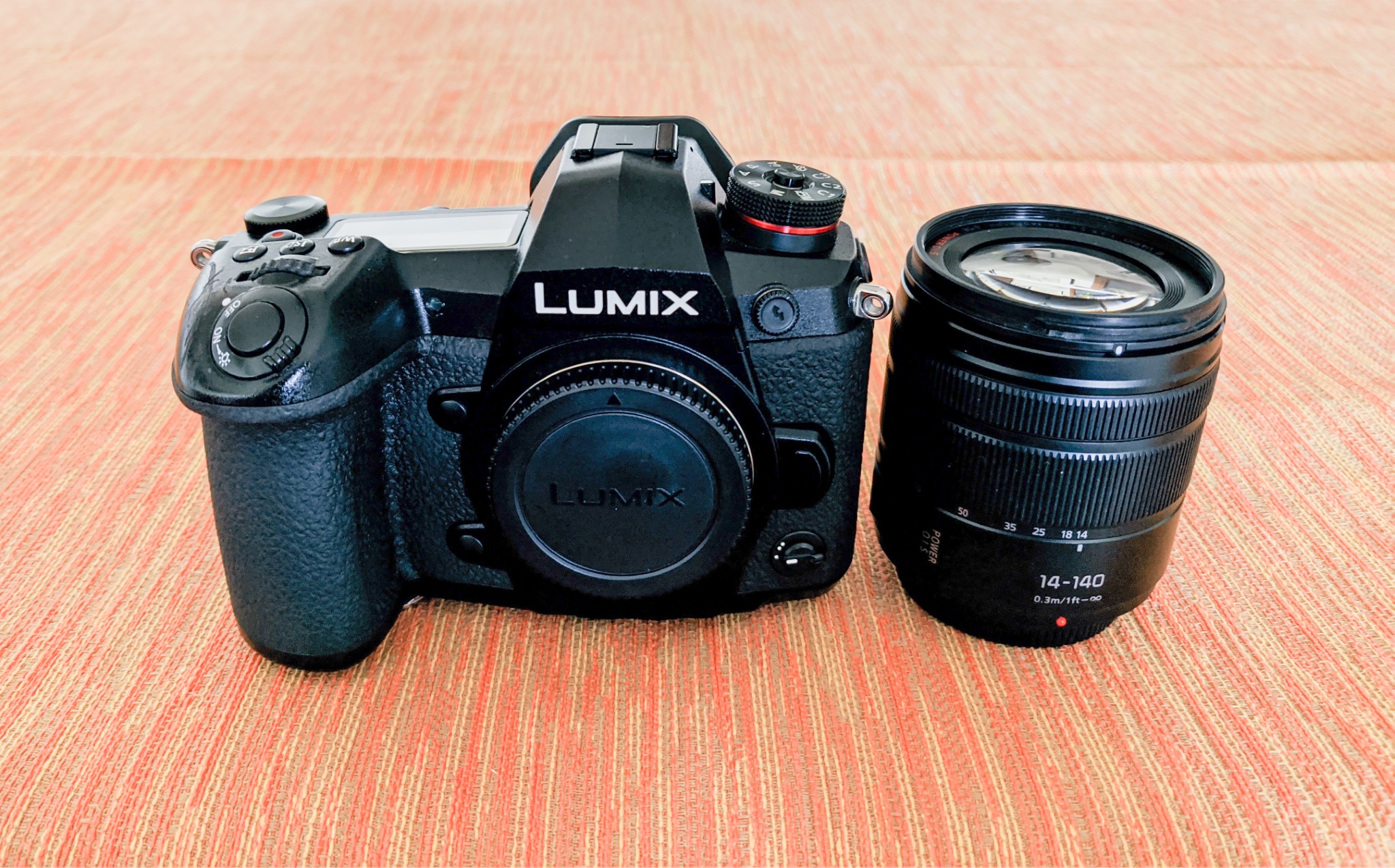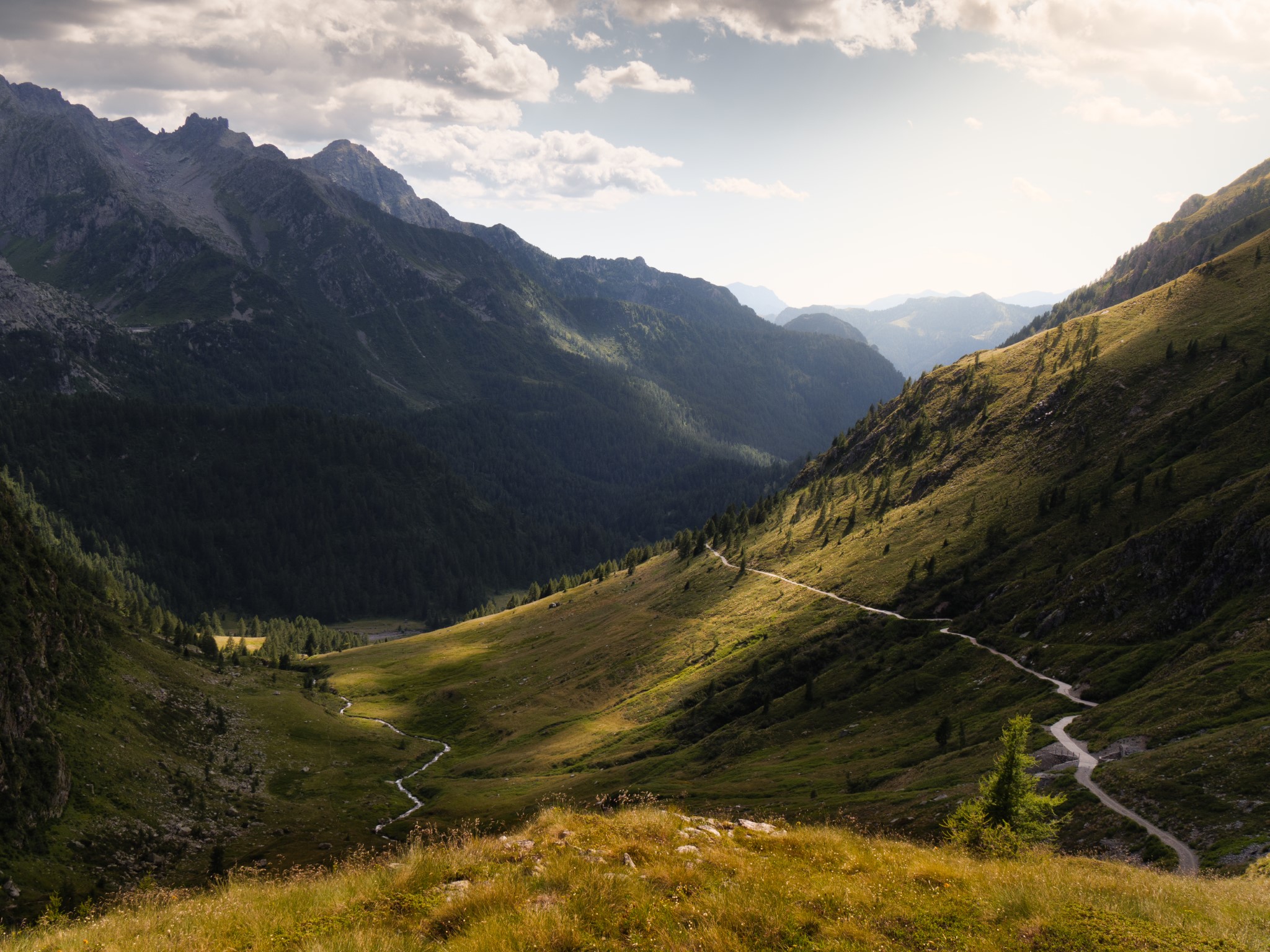I’ve been wanting to discuss my process for taking photos for a while, and by that I mean how I go from “pick up my kit and head out” to “press the shutter button.”
First off, what kind of photos do I take? Mostly landscape and street/urban. These imply two very different processes that deserve to be discussed separately. Today I’ll explor the first.
Also, let’s assume that I use my Panasonic Lumix G9 mirrorless camera. I sometimes use my smartphone too, but it happens rarely these days.
I love landscape photography. There are so many different ways to take a photograph about a subject, so many angles and focal lengths to try, different light conditions and seasons… It’s endless fun!

My Kit And Camera Settings
Most of the time, I shoot handheld. I rarely take a tripod with me, unless I know there will be a really, really pressing need for it, such as moving water or very low light.
Optical stabilization in my G9 is so good that, with some care, I can shoot 1-second shots handheld even at medium focal lengths. Also, I’m not particularly scared of bumping up the ISO level, knowing that the photo will be pretty much usable.
So, no tripod 99% of the times, and that saves space, weight, hassle, and loads of time on location.
When I shoot landscapes, I take my Panasonic Lumix G 14-140mm f/3.5-5.6 OIS zoom lens. It’s small, light and very versatile. It’s equivalent to a 28-280mm full-frame. I tend to shoot a lot at the two extremes – 14mm and 140mm – and I especially love to shoot at 140mm because I can find compositions that are far away from me, for example on the opposite side of a valley or on a distant mountain.
This is the only lens I have and use for landscapes. I might get a 7-14mm and/or a 100-300mm in the future, but what keeps me from pulling the trigger is that I can’t stop wondering if I’d actually use them in the field, considering that swapping lenses feels very annoying…

On a more practical note, I always keep the hood mounted on the lens. It helps to keep the lens clean – and a bit safer in case of impacts… or falls.
I don’t use UV filters on my lenses. They harm image quality and they don’t really serve any purpose with modern lens coatings.
I shoot in Aperture Priority and usually at f/8 because this lens is sharpest at that aperture. If the light isn’t much, I may decide to reduce the aperture value and get a slightly less sharp image, or to increase the ISO and get slightly more noise in the shadows.
If the scene I’m capturing requires it, I stop down even further to get more foreground and background in focus. Sometimes – not often – I focus stack, so I capture multiple images focusing on the foreground, middle, and background and then work with them in post.
If the light is difficult – for example if I’m shooting against the sun – I exposure bracket my photos -2/-1/0/+1/+2 ev so I can have more options later in post processing. I have a physical toggle on my camera configured to do this.
I use autofocus with a very small focusing area at the center of the frame. Autofocus works usually well, but sometimes I switch to manual focus.
I shoot in RAW+JPEG.
I have several neutral density (ND) filters and a circular polarizer, but I admit that almost never use them. They’re a hassle and, as you may have noticed, I don’t like hassles.
On a final note, I have my camera attached to a wide and soft strap with a quick release plate, so I can easily detach it to shoot in awkward positions. I wear the strap cross-body style as it’s the most comfortable configuration for me. I can keep my camera attached this way all day with no problems.
If I’m on a longer walk or hike, I have my backpack with me with a few additional lenses. In this case, I have my camera attached to a quick release plate installed on the right shoulder strap of the backpack itself.
Creativity
For better or for worse, I’m not that kind of photographer that pauses for half an hour to study a composition. I’m not saying doing that is bad – It’s just that I don’t do it.

When I’m out with my camera, I first of all enjoy the views and the environment, but I also keep my radar on for compositions. When I see one, I grab my camera, turn it on, look into the viewfinder – I only use the screen for the awkward positions – find a frame I like, and press the shutter button.
I usually try slightly different compositions and capture them too. I may or may not review the images right away, depending on how confident or patient I am in that moment.
I often shoot into the sun and, for some reason, my landscapes are mostly vertical images.
The whole process may last a few seconds to a minute, and then I move on.
One thing that I learned to do, but I still have to improve, is looking back the way I came and searching for new compositions.
If the location is interesting and the light is decent, I usually go back home with about one or two hundred shots per day.
How many of them are usable… well, that’s another story that we’ll discuss in the next article.
Photos of me by my lovely wife Vale.

